This article was co-authored by wikiHow Staff. Our trained team of editors and researchers validate articles for accuracy and comprehensiveness. wikiHow's Content Management Team carefully monitors the work from our editorial staff to ensure that each article is backed by trusted research and meets our high quality standards.
This article has been viewed 134,193 times.
Learn more...
Originally known as the Balducci Levitation and popularized by David Blaine, this trick gives your audience the illusion that you're levitating off the ground. This is a simple illusion that you can do with a little bit of practice. By balancing on one foot at the right angle, you can amaze your audience and make it look like you're floating.
Steps
Positioning Yourself Correctly
-
1Stand at an angle to your audience. Make sure that your audience is at a 45-degree angle while watching you.[1]
- This trick relies on you positioning yourself so that your audience can only see one of your feet.
- The trick works because your audience will only be able to really see the foot nearest to the audience. With the right angle, the other foot is mostly blocked from view, except for maybe the heel.
- This trick works best with a small audience. If there are too many people you might not be able to find a good angle.
-
2Check your surroundings. You need to make sure that nothing in your area is going to expose the illusion of your levitation.
- Make sure there are no reflective surfaces, like a mirror, that would show the side of your body you are hiding from the audience.
- It’s best to stand a few feet away from a wall or corner. Or, outside in an open space.
Advertisement -
3Stand at a distance. The closer your audience is to you, the harder it will be to hide your back foot.
- Stand about 8-10 feet away from everyone to achieve the best illusion.
- If the audience is too close, then someone might have a viewing angle that exposes the fact that your back foot is still on the ground.
-
4Position your feet together. Place your feet together or leave about 2 centimetres (0.79 in) if space between.
- Giving yourself a bit of space between your feet might help you with balancing.
- Make sure to line up your toes and heels. You don’t want one foot more forward than the other.
Performing the Levitation
-
1Shift your weight. Slightly shift your weight to the foot hidden from the audience.[2]
- You will be balancing on this leg, but the trick is to do so without being obvious. Otherwise, the illusion of floating will be ruined. [3]
- As you shift your weight feel free to explain that you are about to perform a levitation. By talking to your audience, you can divert attention to your face and off of your feet.
- You can be as creative as you want when explaining your levitation. Perhaps you spin a tale of studying Buddhism in a monastery in the mountains. Through your meditation, you learned the art of levitation.
-
2Slowly begin raising your arms. Don’t lift your foot just yet. Raising your arms will give you an upward motion that will make it look like you are about to float.
- By raising your arms slowly before lifting your feet, you draw your audience’s focus up and away from your feet. You also start building suspense.
- Move your arms slowly and feel free to go up and down as if you’re trying to draw air upward. Think of this motion like a bird flapping its wings in slow motion.
- Let your upper body rise and fall with your arms for more effect.
-
3Raise your audience facing foot. Slowly begin to raise the foot a little off the ground to begin floating. [4]
- You can start to raise it and then put it back down for more suspense, or if you need to adjust your balance.
- Raise your front foot about 1 inch (25 mm) off the ground. If you raise it too high you will expose your back foot and ruin the illusion.
- As you raise your foot, angle the edge of it facing the audience down slightly to keep a cover over your back foot.
- Even though you will be wearing shoes, extend and point your toes upward.
-
4Lift the heel of your back foot. As you balance and raise your audience facing foot a little higher, come off the heel of your back foot.
- Try to balance on the outside edge of your back foot, near the ball.
- Raise the toes of your back foot as well.
- By raising your heel and toes you allow space underneath most of your back foot. This will help the illusion to be more convincing, especially if the audience has any view of both feet.
Ending the Levitation
-
1Keep the levitation short. Balancing on such a small part of your foot may cause you to wobble and the longer you hold the levitation, the more the illusion will fade.
- This trick has the biggest effect when it’s over quickly. You want to show your audience that you can float, but you don’t want to give anyone enough time to get a really good look at what you’re doing.
- Perform the trick for maybe 5-10 seconds before coming down.
-
2Start lowering your arms. Begin lowering your arms before you put your foot down to divert your audience’s attention away from your feet.
- Just as you did you when you were starting your levitation, move your arms down and up slightly as if you’re floating down.
- Keeping your arms out will also help you keep your balance and not put your foot down too quickly.
-
3Bring your feet back down. As you begin to lower your front foot you can also plant your back foot more firmly on the ground for support.
- Keep your arms moving and don’t rush.
- You want to slowly lower your foot rather than just stomping it down to keep the illusion up. Slowly lowering it will make you like you’re controlling your descent instead of just shifting your weight back.
-
4Dress it up a bit with by bending your knees slightly. When you make contact with the ground you can then make bend your knees and give your landing some impact.
- Hitting the ground with a tiny bit of force will give the illusion of landing back on the ground rather than just putting your foot down.
- Giving your landing some weight will also help you disguise shifting your balance back.
- Note that after you are done levitating and have both feet on the ground, slowly lower your toes while bringing down your arms.
Community Q&A
-
QuestionWhy should it be done at a 45 angle of the audience?
 RaifCommunity AnswerFrom this angle, the audience will not be able to see that you have your toes on the ground.
RaifCommunity AnswerFrom this angle, the audience will not be able to see that you have your toes on the ground. -
QuestionAny exercises that could help me balance or make it look clean?
 Community AnswerNot really, all you need is practice more. Try practicing with friends or family member as your audience; they can tell you if it looks bad or good. As you practice more you'll get better at it, and it will look cleaner.
Community AnswerNot really, all you need is practice more. Try practicing with friends or family member as your audience; they can tell you if it looks bad or good. As you practice more you'll get better at it, and it will look cleaner. -
QuestionWhat pants would be the best to wear?
 Community AnswerIf you train yourself to become well enough, the pants you wear should not matter. But if you are a beginner, I would recommend wearing long pants that are similar in color to the stage you are performing on. This will help ensure that the audience won’t see your leg that is meant to be hidden.
Community AnswerIf you train yourself to become well enough, the pants you wear should not matter. But if you are a beginner, I would recommend wearing long pants that are similar in color to the stage you are performing on. This will help ensure that the audience won’t see your leg that is meant to be hidden.
Warnings
- Make sure no one is behind you and can see you lifting yourself up.⧼thumbs_response⧽
References
About This Article
If you want to learn how to levitate like David Blaine, you’ll need to learn how to position yourself correctly to give the audience the illusion that you’re lifting up off the ground. Stand at a 45-degree angle to your audience so they can only see one of your feet. The closer you are to your audience, the harder it will be to hide your back foot, so try to be 8 to 10 feet away. Keep your feet together, shift your weight to the foot that’s hidden from the audience, and slowly raise your arms to give you the appearance of upward motion. Once your arms are up to about shoulder height, raise the foot facing the audience about 1 inch off the ground to look like you’re floating. To learn how to end the levitation, keep reading!
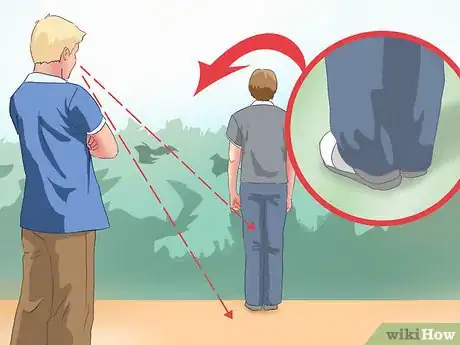

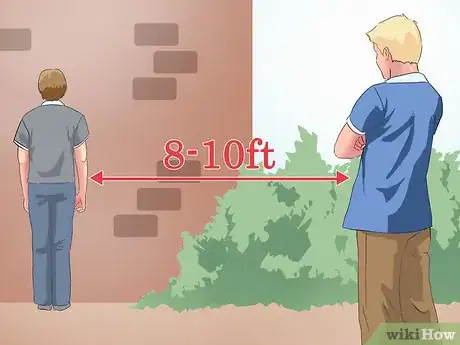
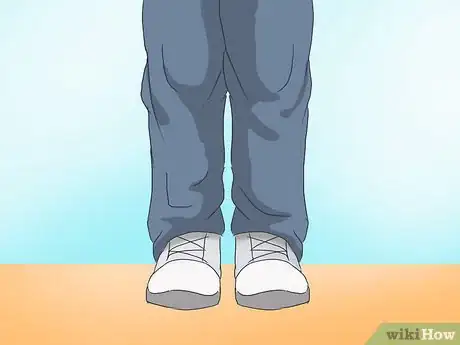

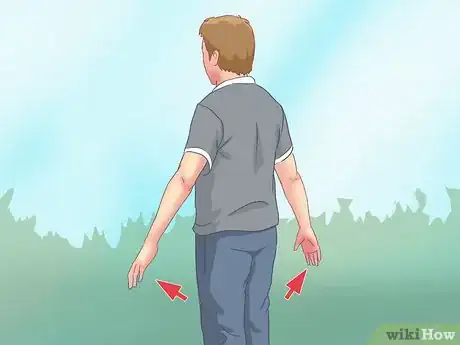
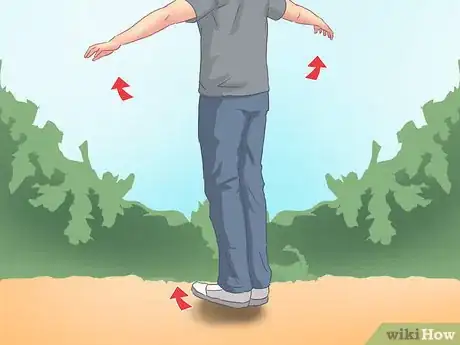
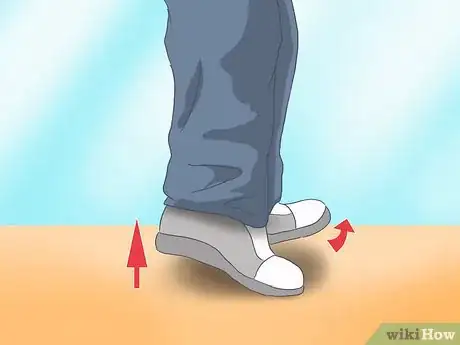

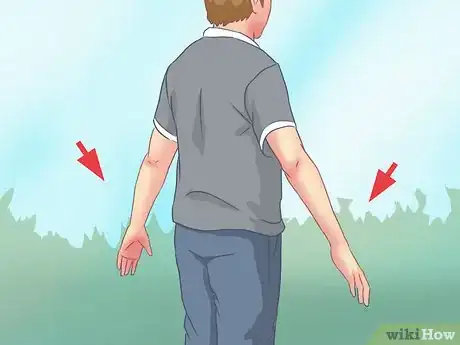
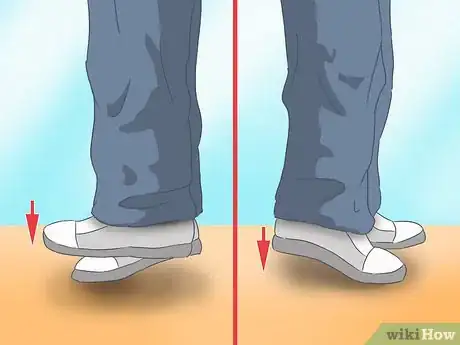
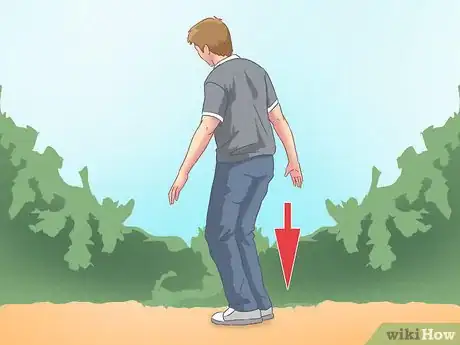
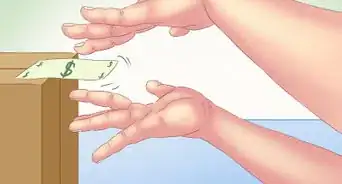

-Step-7-Version-4.webp)

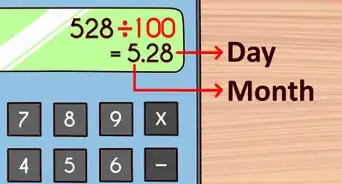

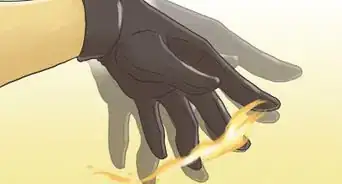
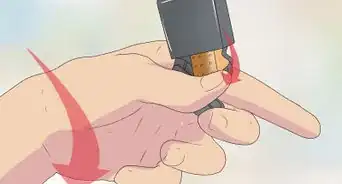











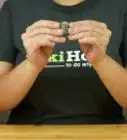
-Step-7-Version-4.webp)


































